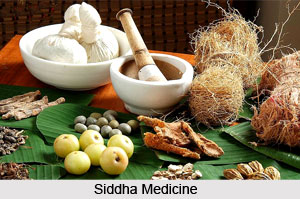 Citrus fruits range from sweet to sour and they include oranges, limes and lemons. Different types of citrus fruits have similar nutrients but in slightly different amounts. The different species of Citrus described by Sanskrit writers are as follows:
Citrus fruits range from sweet to sour and they include oranges, limes and lemons. Different types of citrus fruits have similar nutrients but in slightly different amounts. The different species of Citrus described by Sanskrit writers are as follows:
•Goranebu - The variety of Citrus Acida called Goranebu, yields the lemon juice used in medicine.
•Patinebu - Patinebu is much used as a sauce by the natives. The fresh juice is sprinkled on soup, dal, curry etc. to which it imparts a pleasant acid taste and agreeable flavour. A pickle of patinebu in its own juice and salt is a popular and effectual medicine for indigestion brought on by excess in eating or by indigestible articles of diet. The fruits are first rubbed over a stone, or their rind scraped a little so as to thin it. They are then steeped in juice obtained from other fruits of the sort, and exposed to the sun for a few days with the addition of common salt. When crisp and of a brown colour, they are preserved in porcelain vessels or glass jars. This preparation is called Jaraknebu.
•Kagujinebu - The variety of Citrus Acida called Kagujinebu has larger fruits than that of patinebu, and is also used as sauce like the latter, but its flavour and the fragrance of the essential oil in its rind are not so delicious.
•Mithanebu - This variety of Citrus Medica is described as Mithanebu that is sweet lemon. The pulp of this variety is very limited in quantity, of a bland sweetish taste and without any aroma or acidity.
•Karunanebu - The Sanskrit term Karuna Nimbu is variously translated by different authorities. Wilson in his Sanskrit dictionary calls it Citrus Decumana. In the "Hortus Bengalensis" it is translated into Citrus Medica. Citrus Decumana is called Batavi nebu, from its having been originally brought from Batavia. It is now much cultivated in gardens and is one of the common edible fruits of the country. Some varieties of the fruit have a pleasant taste and aroma, with little or no acidity.
•Kamlanebu - Citrus Aurantium, or the sweet orange, comes from the valleys of the Khasi Hills and of the eastern Himalaya. It is called Kamlanebu in Bengali. The variety grown in the plains has an acid taste and is called Narenga in the vernacular.
Health Benefits of Citrus Fruits
Lemon juice is considered cooling, refrigerant, stomachic and useful in indigestion, dyspepsia, vomiting of meals, thirst, burning of the body, intoxication from spirituous drinks or narcotics etc. Fresh lemon juice is recommended to be taken in the evening, for the relief of dyspepsia with vomiting of meals.
Dose of Citrus in Medicine
It enters into the composition of several carminative medicines for dyspepsia, such as the Hingvashtaka, Kravyadi Churna etc. In rheumatic affections such as pleurodynia, sciatica, lumbago, pain in the hip joints etc., Sarangadhara recommends the administration of lemon juice with the addition of yavakshara and honey.
Rasayanamrita Lauha: Take long pepper, black pepper, ginger, the three myrobalans, baberang seeds, cumin and nigella seeds, ajwain and the seeds of Guidium diffusum (vanojamani), chiretta, trivrit, root of Boliospermum mantanum (danti), neem bark and rock salt each in 2 tolas, prepared iron 16 tolas, sugar 2 seers, decoction of the three myrobalans 4 seers and lemon juice 2 seers. Boil all these ingredients together till the watery portion is evaporated, lastly add clarified butter, half a seer and prepare a confection. Dose is 1 to 2 tolas in enlargements of the abdominal viscera, anaemia, jaundice, anasarca and chronic fever.
In fever complicated with pain in the head, throat and chest, the following mixture is directed to be used as a snuff for promoting discharge of phlegm. Take lemon juice, ginger juice, rock salt, black salt and sonchal salt equal parts and mix. The mixture should be warmed a little before use.
The root of the variety of Citrus Acida, called Patinebu constitutes one of the principal ingredients in the composition of a medicine called Yakridari Lauha.
Related Articles
Ayurveda
Ayurveda Medication
Elements of Ayurveda
Concepts of Ayurveda
Ancient Literature of Ayurveda
Sushruta Samhita
Classification of Medicine




















